The following series of activities focuses on the affective numeracy competencies: confidence, autonomy and self-awareness.
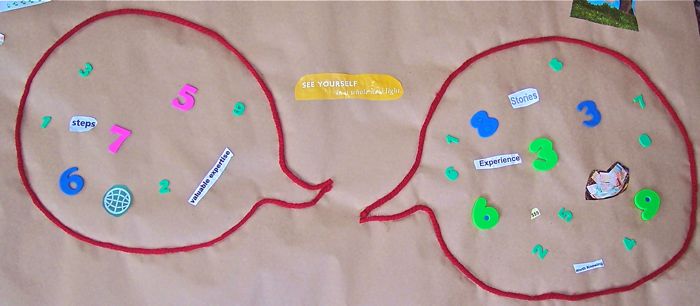
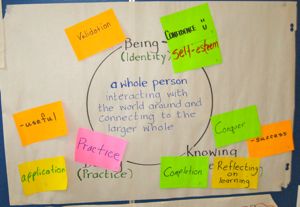 Building Confidence, Autonomy and Self-awareness
Building Confidence, Autonomy and Self-awareness
One practitioner shared the way she would look at the development of a learning process with emphasis on building learner confidence, autonomy and self-awareness.
Begin with an open-ended assessment:
• Where are you now?
• What do you need to learn?
Set goals together.
Choose resources together – the wider the scope of materials, the greater the test of knowledge.
Encourage practice, practice, practice.
Encourage and facilitate self-assessment.
Provide opportunities to teach others – through presentation, through explanation.
Affirm a shift in affective numeracy competencies, that is, personal growth in confidence, autonomy (independence), and self-awareness as a learner.
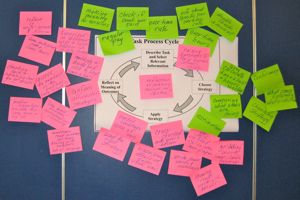 Building Autonomy
Building Autonomy
Consider a learner who is a registered apprentice preparing for a test.
What do you do?
1. Start with an open-ended assessment. Get to know the learner’s background and experience, in addition to determining what skills might be needed.
2. Draw out needs and gaps:
- numeracy skills such as operations (whole numbers, fractions, decimals); conversion in measurement; word problems
- familiarity with various types of test questions, i.e. multiple choice
- test-taking strategies
- language skills to support numeracy learning
3. Generate a learning plan.
4. Develop relevant activities, including review, self-assessment activities.
5. Select appropriate materials specific to apprenticeship trade, in addition to literacy and numeracy resources.
6. Support through tutoring and weekly meetings.
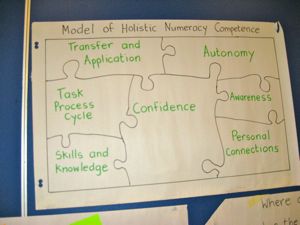 Building Confidence
Building Confidence
What do you do?
- Start with assessment of student’s math skills (where he/she is weak and strong).
- Show learner the list of skills he/she likely needs to improve.
- Let learner decide where to start with those skills.
- This might give the learner a sense of confidence and maybe help to lessen “math anxiety.”
- Possible Problem #1. Math is a fairly logical subject. What if a learner chooses to start at Step 4, not knowing that Steps 1, 2 and 3 are necessary first?
- In response to Problem #1, the instructor could start at Step 4 and “gently” lead the learner to the realization that Steps1, 2, and 3 are necessary first.
- Possible Problem #2: Suppose a learner chooses not to choose any step?
- Possible solution to Problem #2: The instructor chooses Step 1, teaches it and then again offers learner choice on the next steps.
 Math Anxiety "back to the books..."
Math Anxiety "back to the books..."
Anxiety is a major factor... N -O- T Math P-L E-A-S-E!
What do you do?
- Quick math “assessment”, two-pager
- Sit with learner to work on page 1
- Page 1: addition, subtraction and multiplication – check together!
- Once done, hand out page 2.
- Page 2: division, fractions, decimals and percents (these are often forgotten or rusty skills - squeaky! creaky!! scary!!! They need some ‘oil’.)
When assessment is done together as an activity, this helps build confidence which in turn lessens learner anxiety.
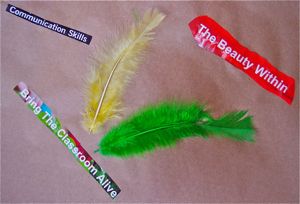 Building Confidence
Building Confidence
Practice:
- Start with ‘do-able’ exercises
- Reinforce success
- Understand process exercises with physical things, i.e. beans
Communication:
- Write in long-hand what had been done in formula form
Teaching/learning:
- Teach others what has been learned
- Volunteer in learning centre, e.g. as a peer tutor
Skill-based/problem solving:
- Apply skills to other learning activities, i.e. apply problem-solving in math to problem-solving in life
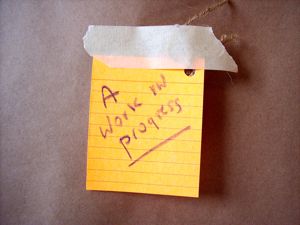 Confidence Includes Self-awareness
Confidence Includes Self-awareness
What do you do?
- Build on previous successes such as completion of different modules and the math areas, e.g. fractions, decimals, area.
- Develop a good, neat, organized notebook or journal (instead of loose scraps of paper easily lost).
- Go slowly, success does not happen overnight. It’s a long-term effort.